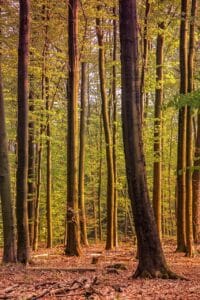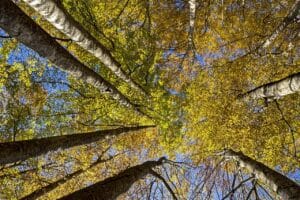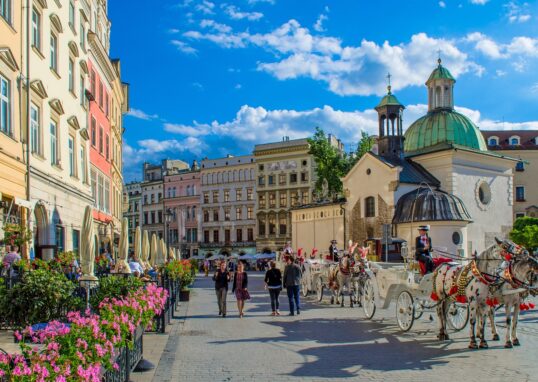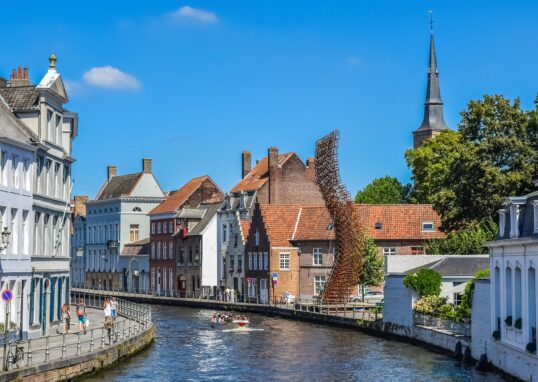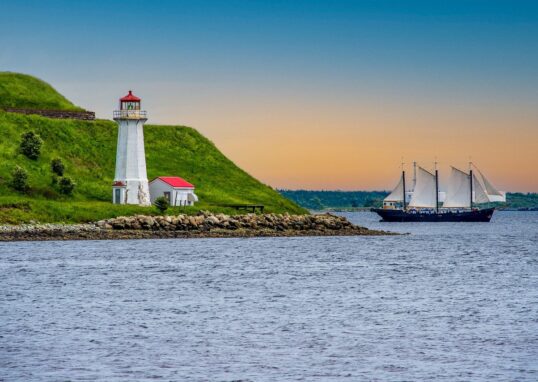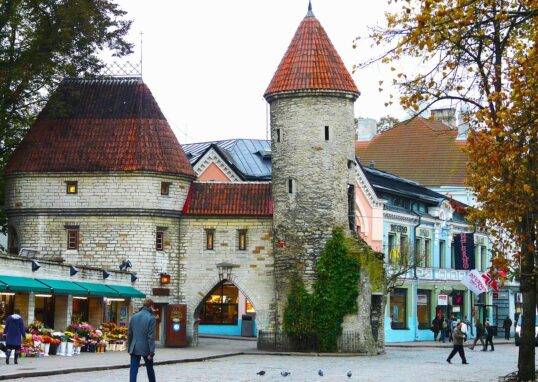
🌳 Ancient and Primeval Beech Forests of the Carpathians and Other Regions of Europe
The Carpathian and other European Ancient and Primeval Beech Forests are some of the most extraordinary and distinctive natural sites on the planet. These forests demonstrate how nature has evolved over thousands of years. They reveal Europe’s natural history since the Ice Age. Beech tree is one of the most important trees in Europe. It spread widely across the continent with climate shifts. Today, the forests are living proof of evolution, growth, and survival. That’s why they have been recognized by UNESCO as a World Heritage Site. These woodlands are distributed in numerous countries. They are not located at a single place. Rather, they occupy land in 18 different countries of Europe. This ranks them among the most geographically widespread UNESCO heritage sites globally. In this blog post, we will talk about their history, their habitat, their plant life and wildlife, and the relationship that humankind has with them. We will also take into account nearby tourist attractions and why they are so special.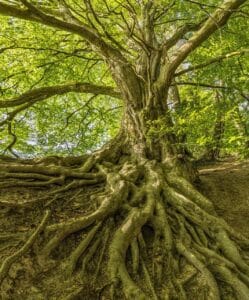
History of the Beech Forests
After the Ice Age, Europe had been covered by ice. When ice melted, new life began to grow. Beech tree also adapted itself to the new climate. Gradually, it spread from southern parts of Europe to north and west. Over a period of thousands of years, the beech forest covered most of the territory. It displaced older forests and created new habitats. That is why scientists call them primeval forests. They are old and natural with little human interference. The beech forests are not only natural miracles. They also bear human stories. People have used beech wood for centuries for tools, furniture, and even homes. Legend and myth portray the forest as a land of magic, mystery, and wisdom. In 2007, the Primeval Beech Forests of the Carpathians in Slovakia and Ukraine were first placed on the UNESCO list. Later on, more forests in Europe were added. Currently, the site covers several countries including Austria, Belgium, Bulgaria, Croatia, Germany, Italy, Poland, Romania, Slovakia, Slovenia, Spain, Switzerland, Ukraine, Albania, Czech Republic, France, and North Macedonia.
Geography of the Forests
These cover the mountains, river basins, and valleys. The most famous are those of Ukraine and Slovakia, known as the Carpathian Mountains. The mountains are covered with dense green forests that change color seasonally. The German forests are located in Kellerwald-Edersee National Park and other places. Italy’s Apennine Mountains have ancient beechwoods. Spain’s Irati Forest is one of the largest in southern Europe. Each country possesses a unique landscape. Some are hills, some are mountains, and some are valleys. Some are riverside, and others are distant from rivers. All this variety makes the beech forests heterogeneous and beautiful.
Flora and Fauna
The beech tree is the forest’s main star. Its gray, smooth trunk and its tall, spreading branches distinguish the forest. During summer, the leaves form a dense green roof. During autumn, they turn golden, red, and brown. Under the beech trees, there are many other flowers. Mosses, ferns, and flowers cover the forest floor. There are some exotic orchids. The forests are inhabited by a range of animals. Brown bears, wolves, and lynxes live in the Carpathians. Wild boars and deer live in Germany and Italy. Woodpeckers, owls, and eagles live in the trees. Fish and amphibians live in the rivers and streams. Together, the animals make the forest a living museum of biodiversity.
Natural Beauty and Landscape
Among the most striking features of the beech woods is that they are so lovely. The tall trees create peaceful green tunnels. If the sun’s rays pass through the leaves, the forest is illuminated. In autumn, it is magical. Red, orange, and golden leaves create a masterpiece. In winter, the trees are naked, covered in snow. In spring, new flowers and leaves bring new life. Mounts, rivers, and grasslands enhance the scenery even further. Trekking trails allow visitors to see waterfalls, cliffs, and valleys. Nature lovers and photographers are constantly inspired by it.
Cultural and Human Connections
The forests do not belong only to nature. They also come with human culture. The majority of European folk legends and fairy tales happen in the forest. Beech groves were typically considered holy. Locals depended on these forests. The beech wood was durable and precious. It was used to make furniture, tools, and musical instruments. Charcoal from the beech was precious in ancient times. To this day, villages that share borders with the forests continue to celebrate nature-related festivals. Ancient dances and songs will even honor the forest deities. The forests are part of European culture.
🌳 Trees and Animals of the Ancient and Primeval Beech Forests
The Ancient and Primeval Beech Forests of Europe are not scenery alone. They are living environments for flora and fauna. They cover huge tracts, from the Carpathians of Ukraine and Slovakia to the Pyrenees of Spain and the Apennines of Italy. Each region has its unique species. But they all have one thing in common: the European Beech (Fagus sylvatica). The woods also provide shelter to a varied variety of animals. From large mammals like brown bears and wolves to small insects, every living organism has a contribution to make. In this part, we shall outline the major tree species and the fauna that provide these forests with a natural gem.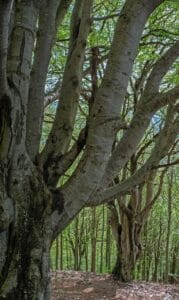
The Main Tree: European Beech
The key tree of these woodlands is the European Beech (Fagus sylvatica). The tree attains a tall height, normally 30 to 40 meters. It has a straight and smooth trunk with silver-gray color. Its branches are broad and result in a dense canopy. In spring, leaves are tender and light green. In summer, woods become dense and do not receive much sunlight on the ground. In autumn, leaves turn golden, orange, and red. In winter, bare trees loom overhead, typically covered in snow. The beech tree has many uses. Its wood is strong, heavy, and good for furniture, flooring, and tools. Its nuts, called beech mast, feed many forest animals like deer, boar, and birds. The European Beech is also special because it adapts well to different soils and climates. That is why it spread so widely across Europe after the Ice Age.
Other Tree Species
The beech is dominant, but other trees occur in these forests. They add diversity and refinement.
- Norway Spruce (Picea abies) – Occurs in cooler, higher areas. Tall and columnar, with dark green needles. Offers shelter for mammals and birds.
- Silver Fir (Abies alba) – A tall conifer with shiny green needles. Its cones are large and upright. It occurs together with beech in mountainous country.
- Scots Pine (Pinus sylvestris) – Hardy pine tree with reddish-colored bark. Growing in the drier part of the edges of the forest.
- Sycamore Maple (Acer pseudoplatanus) – Green, with big green leaves. Yellow in autumn. Produces insect nectar.
- Norway Maple (Acer platanoides) – Similar to sycamore, but pointed leafy edges. Supplies sap to insects and birds.
- European Ash (Fraxinus excelsior) – Taller tree, with leaf-like feathers. Sadly, at risk from a fungal disease.
- Sessile Oak (Quercus petraea) – Big tree, often with beech interspersed. It has acorns as a wildlife food source.
- Hornbeam (Carpinus betulus) – Little tree with gray, smooth bark. Its wood is very hard.
The trees together create a mixed woodland community. This mixture keeps the forest safe from insects, storms, and the variations of climate.
Animals of the Beech Forests
The forests are full of animals. From large carnivores to small bugs, they are present. Let us talk about some of the most important species.
Large Mammals
- Brown Bear (Ursus arctos)
One of the most well-known animals of the Carpathians. It is powerful and can be as heavy as 300 kilograms. Bears eat berries, roots, fish, and sometimes little animals. They need big areas of forests to survive. - Gray Wolf (Canis lupus)
The wolf is the wild Europe symbol. The wolf lives in packs and hunts. The wolf is an animal that preys on deer, boar, and small animals. The wolf is shy but required for nature equilibrium. - Eurasian Lynx (Lynx lynx)
A rare and shy cat. It possesses spotted fur, sharp eyes, and tufted ears. Lynxes prey on rabbits, deer fawns, and birds. Lynxes are silent predators and hard to spot. - Wild Boar (Sus scrofa)
Common in beech forests. Burrow the earth with their hard snouts to dig for roots and nuts. A major contribution they make by aeration of soil and seed dispersal. - Red Deer (Cervus elaphus)
A majestic animal with massive antlers. The males are renowned for bellowing sounds during autumn mating season. Leaves, bark, and grass are fed on by deer. - Roe Deer (Capreolus capreolus)
Smaller than the red deer. Very graceful and shy. They hide in thick cover.
Smaller Mammals
- European Badger (Meles meles) – Nocturnal digging animal. Feeds on worms, insects, and fruit.
- Red Fox (Vulpes vulpes) – Clever and cunning. Foxes eat rodents, birds, and berries.
- Pine Marten (Martes martes) – Sleek tree-dwelling predator. Eat squirrels, birds, and insects.
- European Hare (Lepus europaeus) – Also located in open areas along the forest edge. Runs away fast to escape predators.
- Bats – Many species of bats live in old trees and caves. They consume insects and control pest populations.
Birds
Beech woodlands are excellent habitats for birds.
- Black Woodpecker (Dryocopus martius) – The largest of the woodpeckers, which has a very loud call and makes big holes in trees.
- Eurasian Eagle-Owl (Bubo bubo) – A world’s largest owl. Hunts at night.
- Common Buzzard (Buteo buteo) – A bird of prey which often can be observed gliding high over the forest.
- Ural Owl (Strix uralensis) – Indigenous to Carpathian landscapes. Hunts small mammals.
- Songbirds – Warblers, tits, thrushes, and finches produce a heavenly music in the forest.
Birds not only bring beauty but also spread seeds and keep insects under control.
Reptiles and Amphibians
- European Green Lizard (Lacerta viridis) – Glossy green, often seen in open glades.
- Adder (Vipera berus) – Tiny venomous snake, shy rather than aggressive.
- Fire Salamander (Salamandra salamandra) – Yellow-spotted black, often seen after rain.
- Common Frog (Rana temporaria) – Found in streams and ponds.
These are examples of how ground and water habitats link up within the woodland.
Insects
Insects are important.
- Stag Beetle (Lucanus cervus) – One of the largest beetles found in Europe, with antler-like jaws.
- Butterflies – Some species like the Red Admiral and Peacock butterfly obtain their food from flowers.
- Bees and Wasps – Pollination is made possible by them.
- Ants – Form colonies and decompose nutrients. Small as they are, insects infuse life into the forest.
Why These Species Matter
All animals and trees in the woods form a bigger system. The beech tree provides protection, food, and shade. Bears disperse seeds when they consume fruits. Wolves regulate deer populations. Woodpeckers drill holes in trees where bats or owls live later on. If one species is lost, others can be harmed. That is why biodiversity should be protected. The beech wood illustrates how nature lives together harmoniously. The Ancient and Primeval Beech Forests are not trees. They are existence. The European Beech is the central tree, but a few others join it. Together, they form a forest that provides shelter to countless animals. From the big bear to the tiny butterfly, all species have their part. They add balance, beauty, and diversity. As tourists walk along these forests, they are rewarded with more than scenery. They find themselves in the realm of living things, shaped by thousands of years. Preservation of these species is preservation of Europe’s legacy. These forests are a gift, not only to Europe but to the world.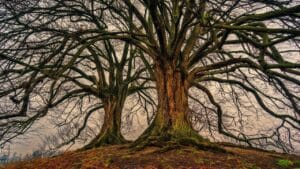
Activities for Visitors
There are much to do here for tourists. The favorite one is hiking. There are trails that cross mountains, valleys, and riverbanks. Observation of wildlife is also popular. Tourists can catch deer, wild boar, or wolves even in some places. Bird watchers can spot rare species. Photography is worth the while throughout the year. The forests acquire their various color and mood with each season. In the winters, skiing and snowshoe walking are offered in mountainous areas. In summer, nature tours with guides and camping are offered. Many countries also offer cultural tours. The tourists can go to villages, castles, and churches near the forests.
Surrounding Attractions
The forests also encompass rich cultural and natural attractions around them.
- In Slovakia and Ukraine, the Carpathians also include wooden churches of the past, old villages, and spa towns. In Germany, tourists can see charming towns like Kassel and Marburg nearby Kellerwald-Edersee.
- In Italy, the woods are in close proximity of Abruzzo National Park, and they have bears and mountains. In Spain, the Forest of Irati is in close proximity of Pamplona, famous for culture and food. In Romania, there are castles like Bran Castle and towns like Brașov nearby.
All these along with culture make forest visits a complete experience.
Conservation and Protection
The beech forests are under threat. The forests can be destroyed by logging, urban sprawl, and climate change. That’s why they need protection. UNESCO, the local government, and NGOs work together to safeguard the forests. National parks and nature reserves stop massive destruction. The tourism is controlled by sustainable regulations. The visitors are asked to treat nature kindly, keep tracks, and don’t waste anything. The activities ensure that the forests will be left for future generations.
Country Highlights
Ukraine: Home to some of the largest untouched beech forests in the Carpathians.

Slovakia: Poloniny National Park has deep forests and rare animals.
Germany: Kellerwald-Edersee National Park offers hiking and lakeside beauty.
Romania: Virgin forests and the Carpathians host wolves and bears.
Italy: The Apennine Mountains have protected beech stands in Abruzzo.
Spain: Irati Forest is one of the best-preserved in southern Europe.
Austria: Forests combine with Alpine landscapes.
France: Small but rich beech reserves.
Switzerland: Forests near the Alps give stunning views.
Each country adds to the richness of the UNESCO site.
Conclusion
The Ancient and Primeval Beech Forests of the Carpathians and Other Parts of Europe are a living heritage. They remind us of our past, teach us about the beauty of the current times, and inform us about our responsibility to save nature for the future. They are not just trees. They are tales of survival, growth, and culture. They are habitats for animals, vegetation, and memories for people. Walking through these forests is walking through time. With each step, there is the tale of life. For travelers, the forests offer peace, adventure, and wonder. For the world, they offer lessons about balance and respect. So, when you think about Europe, do not only think about cities and monuments. Think also about the ancient beech forests. They are just as important, just as beautiful, and just as inspiring.


